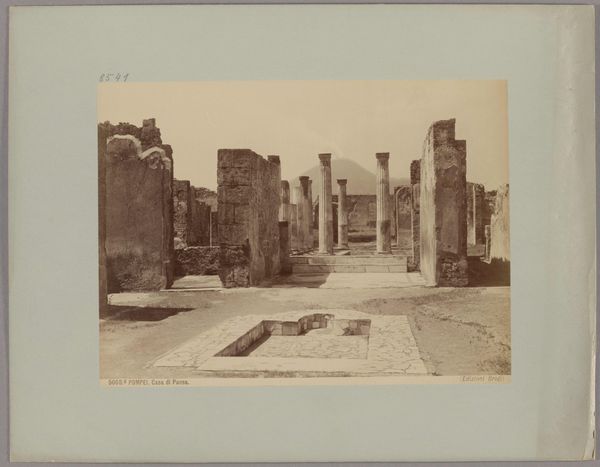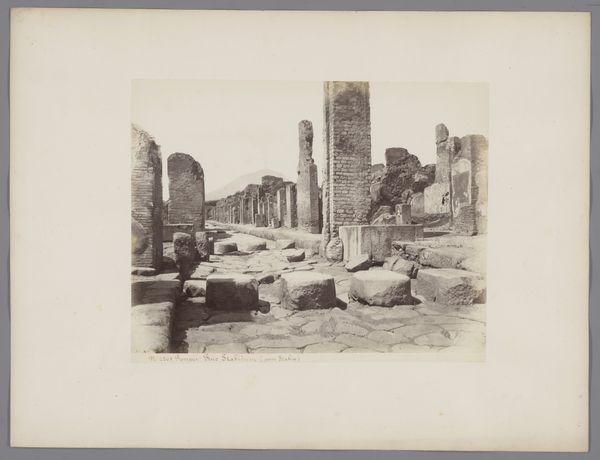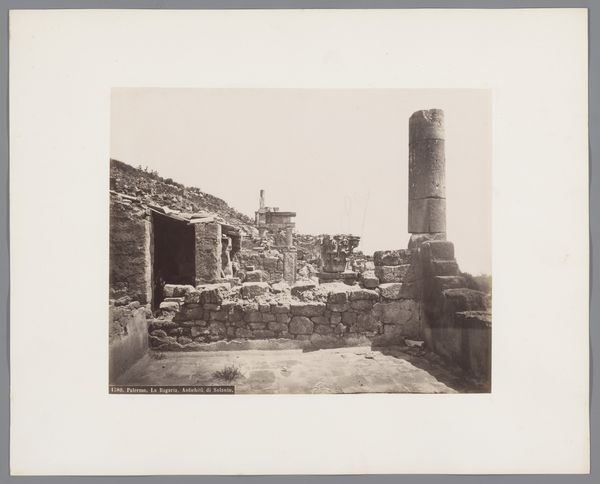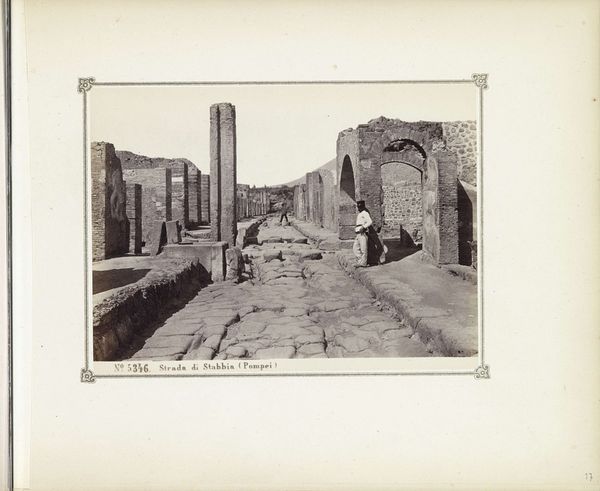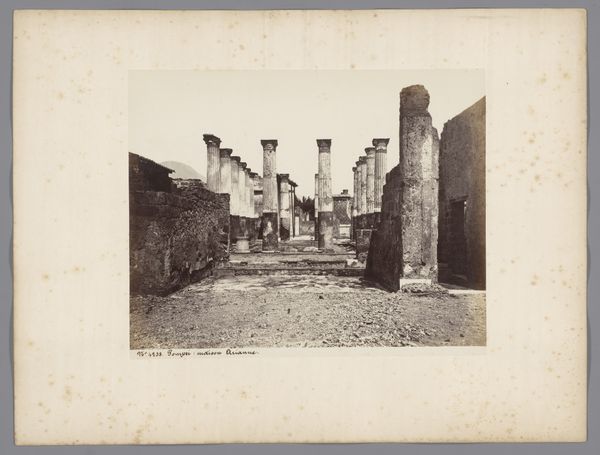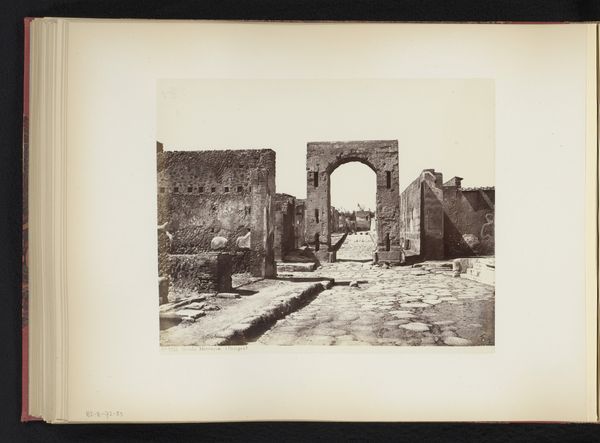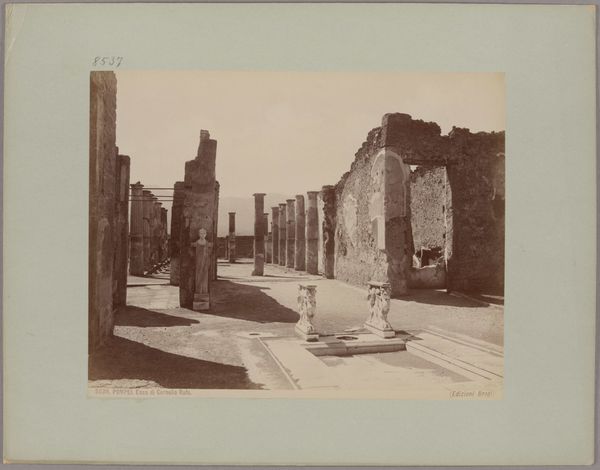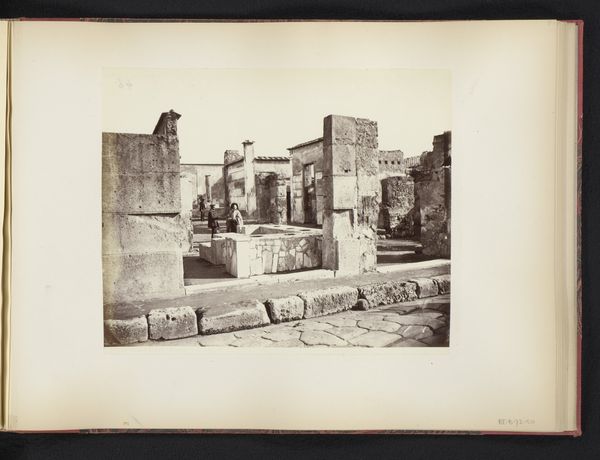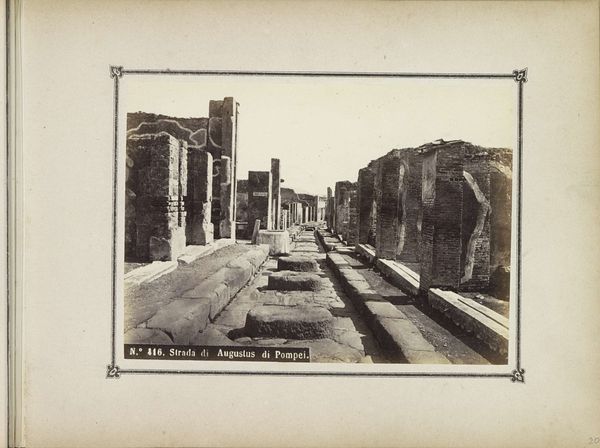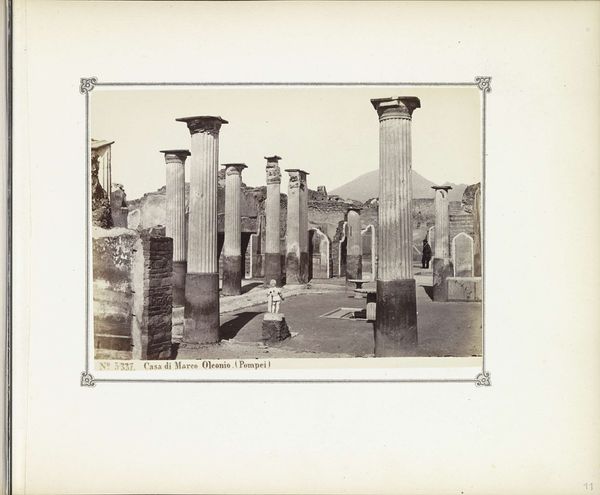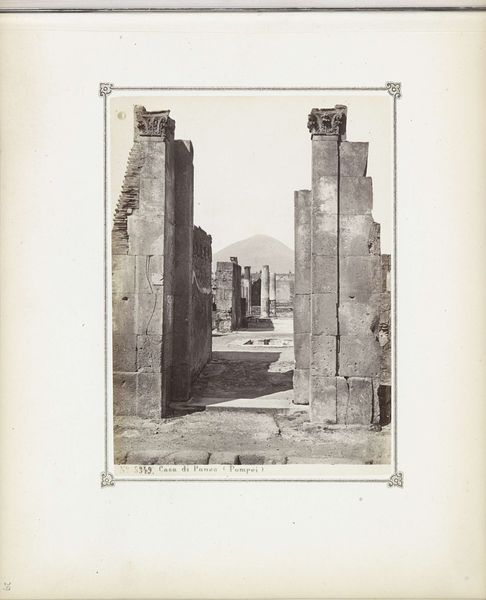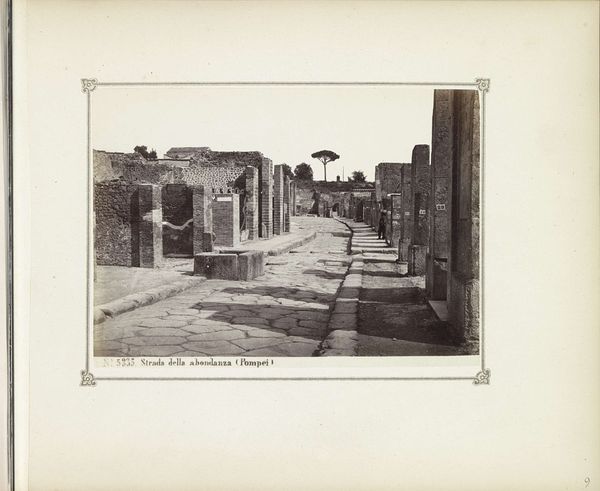
albumen-print, paper, photography, albumen-print, architecture
#
albumen-print
#
greek-and-roman-art
#
landscape
#
paper
#
photography
#
ancient-mediterranean
#
albumen-print
#
architecture
#
realism
Copyright: Public Domain
Editor: This photograph, "Pompeii Hanging Balcony House," was captured by Giacomo Brogi sometime between 1880 and 1890. It's an albumen print. I find the depiction of the ruined architecture strangely beautiful. What stands out to you in this image? Curator: I see the material reality of the past made strikingly present. Consider the process of creating an albumen print: the meticulous preparation of the paper, the lengthy exposure times. These physical efforts are crucial. Brogi wasn’t simply documenting ruins; he was engaging with the labor inherent in preserving a specific material interpretation of Pompeii. Editor: So, you’re focusing on the craft, the ‘making’ of the photograph itself, and how that relates to representing Pompeii. That’s interesting! How does this connect to broader social ideas? Curator: Absolutely. Think about who would have consumed these images. Photographs of Pompeii were highly desirable souvenirs for European tourists on the Grand Tour. The albumen print, as a commodity, facilitated a specific kind of cultural consumption. This raises questions: what kind of narratives were tourists encouraged to believe, and who profited from those narratives about the excavation and sale of history itself? It wasn’t neutral. Editor: I see what you mean! The image itself is a product, caught up in complex layers of labor, commodification, and even exploitation, connected to the site itself. It becomes more complex the more closely you analyze it. Curator: Exactly! It asks us to examine not only what is depicted but also how it was produced and circulated, who benefited, and what socio-historical systems are thereby exposed. Editor: That materialist lens has completely transformed how I perceive the photo. Thanks!
Comments
No comments
Be the first to comment and join the conversation on the ultimate creative platform.
